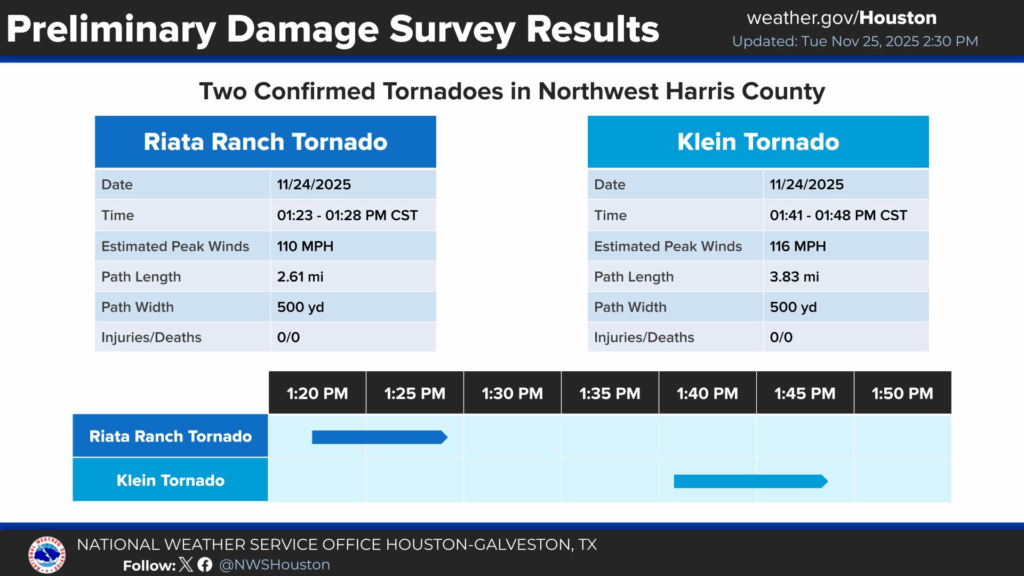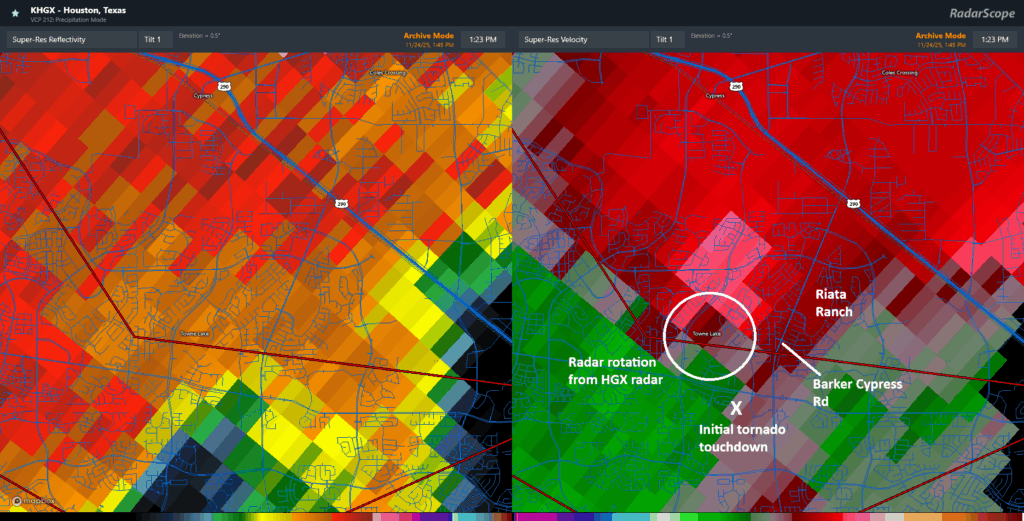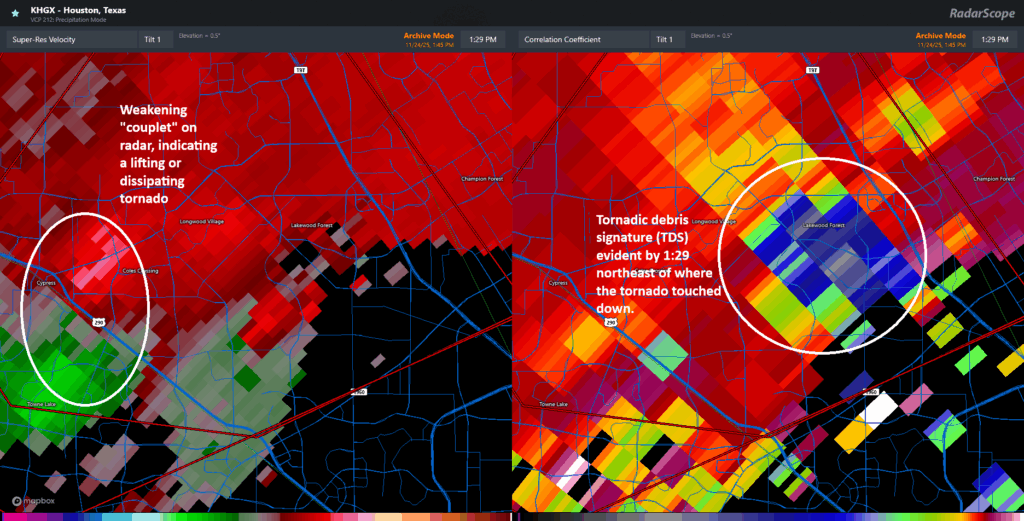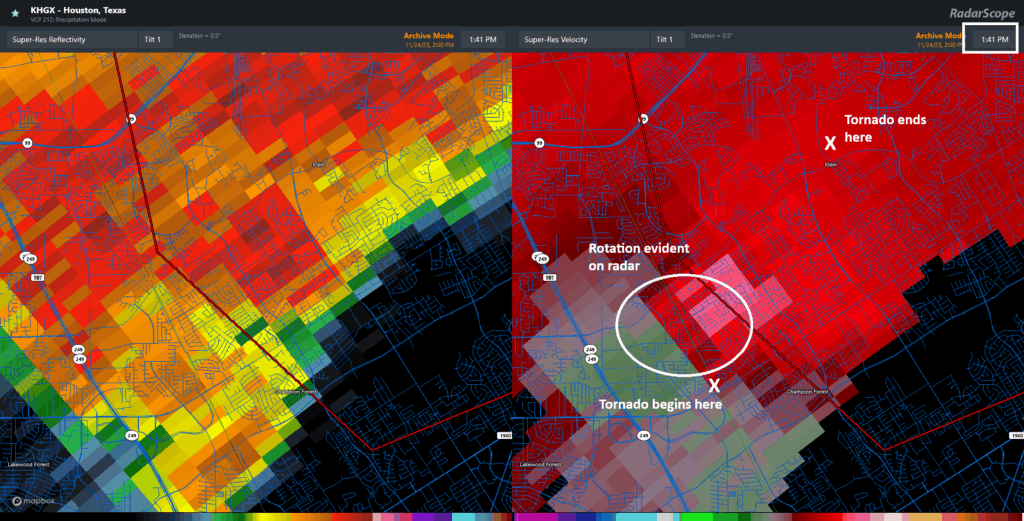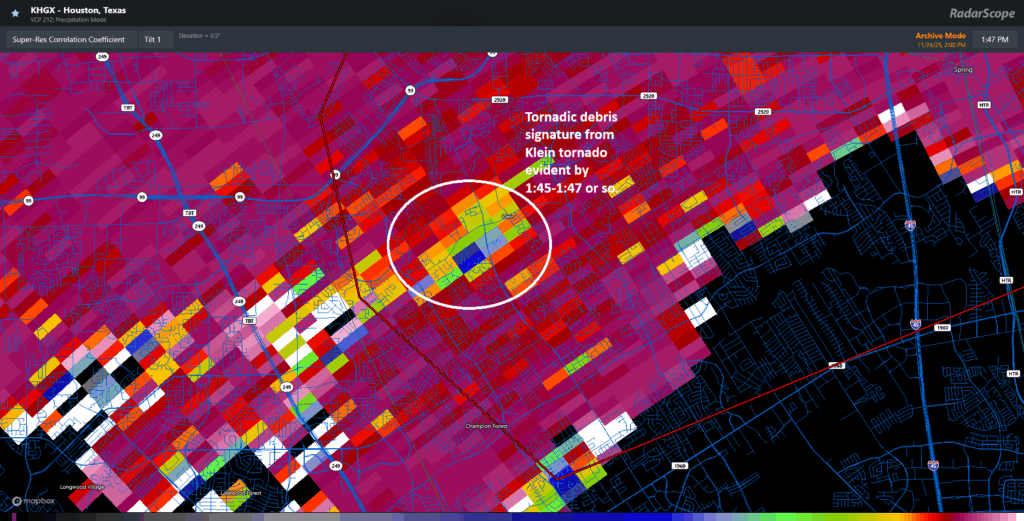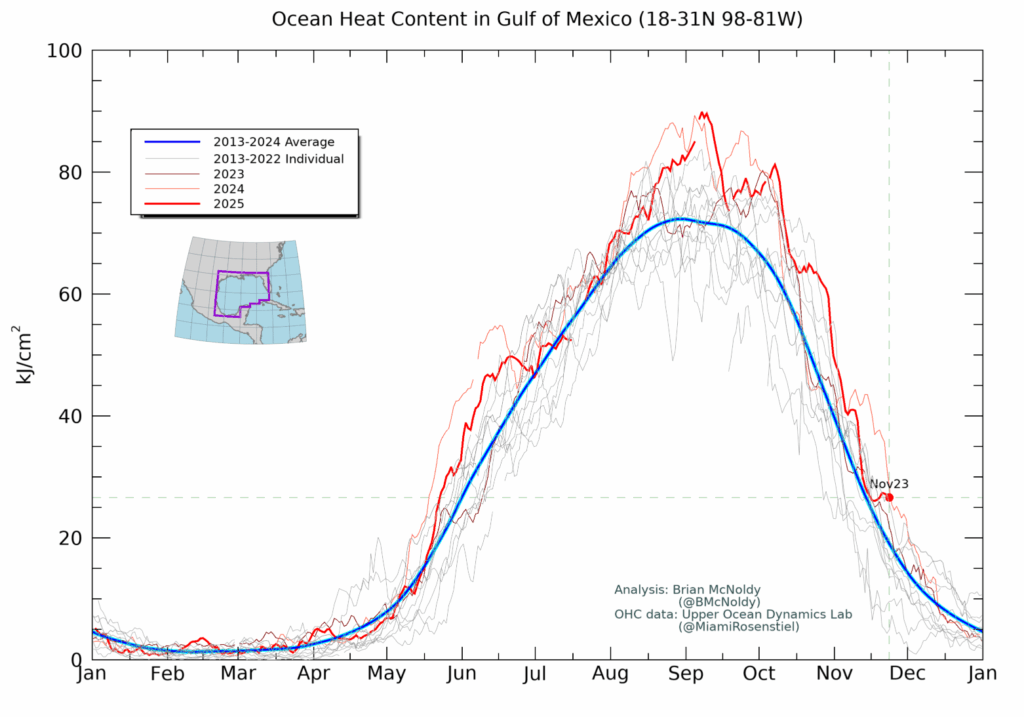In brief: In today’s post we discuss the seasonal conditions for Thanksgiving, which will be followed by widespread showers this weekend. After this we will be sharply colder next week, with a slight chance of a freeze. Also, a brilliant fireball soared through the skies over Houston last night.
Fireball over Southeast Texas
Last night around 10 pm I received a couple of messages about a bright object transiting the sky above Houston. This almost certainly was a fireball, a name for a large meteor (typically a few feet across, or larger) that has an apparent magnitude of -4 or brighter. According to unconfirmed sightings at Fireball reports, this object was brighter, closer to magnitude -10, or nearly as bright as the Moon. Via the local Houston subreddit I found this video of the object, captured at 9:34 pm CT on Tuesday night from north Houston. It is quite spectacular, although I believe you have to be logged into Nextdoor to view it. Even for dedicated meteor observers, such a bright fireball would be a fairly rare sighting. Congratulations to everyone who got to witness it in real time!

Early week tornadoes
A high-end EF-1 and a low-end EF-2 tornado on Monday were confirmed from damage surveys conducted by the National Weather Service northwest of Houston. The first occurred in Riata Ranch. The second was in Klein. Matt compiled a full report on what is known about these tornadoes, which were not particularly well forecast in advance.
Wednesday
Away from the coast temperatures have generally fallen into the 50s this morning. We’re starting to see some gusty winds from the north, and that’s evidence of a reinforcing front that will bring some significantly drier air into the region. As a result we are going to see gusty conditions this afternoon, up to 20 or 25 mph. With the influx of colder air, highs today are likely to max out in the upper 60s, despite sunny skies. Low temperatures tonight will bottom out in the upper 40s in Houston with cooler conditions for outlying areas. Winds will slacken some.

Thanksgiving Day
The holiday will dawn cold and clear, with light northeasterly winds. High temperatures will, for the most part, be in the mid-60s across the region with clear skies. Really we have zero weather concerns so please just enjoy the holiday with friends and family. Lows on Thanksgiving night will again drop into the upper 40s for many locations, although winds will shift to come from the east overnight, a harbinger of a returning onshore flow.

Friday
After a chilly start, highs on Friday will push into the upper 60s. We are going to see building clouds as atmospheric moisture levels increase. Winds from the southeast will pick up, gusting to perhaps 20 or 25 mph. This increase in moisture will lead to some slight rain chances by Friday night, but for the most part I think they’ll hold off until the weekend.
Saturday and Sunday
We are going to warm up on Saturday, with highs in the 70s and a return of humidity. This will set the stage for widespread showers (although probably not any severe weather) during the day and evening. At some point on Saturday night or early Sunday, a front is going to push into the area. This will bring colder air, but not end rain chances. Sunday should see highs in the vicinity of 60 degrees during the daytime, with perhaps a 50 percent chance of rain. Skies remain mostly cloudy. Most of us should probably pick up, roughly, 1 inch of rain through the weekend. Totals will vary widely, however.
Next week
The first half of next week looks cold, with highs in the 50s, and an ongoing chance of rain. Tuesday and Wednesday morning look to be the coldest of the forecast period, and we cannot rule out a light freeze for inland parts of the Houston area. I would say the chances are low, but non-zero. We’re going to keep an eye on it. When we flirt with a freeze, and there is lingering precipitation, the next question is whether there could be any frozen precipitation. The short answer is probably not. The longer answer is probably not because the colder air arriving by Tuesday should do so as precipitation is ending, but I would not rule anything out just yet. Temperatures appear to moderate some by the second half of next week, with highs likely in the 60s.

Fundraiser
We are nearing the end of our annual fundraiser for 2025, but it has not ended yet! You can still donate to Space City Weather, or purchase merchandise, by clicking here. We greatly appreciate your support for all we do here.

